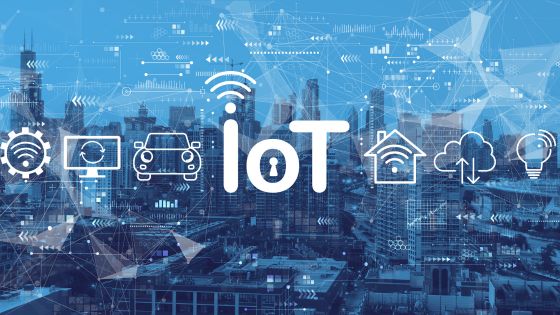The concept of a “smart city” is no longer a futuristic fantasy. With the rapid advancement of technology, particularly the Internet of Things (IoT), cities worldwide are transforming into intelligent, data-driven environments. This article will delve into the urban impact of IoT solutions, exploring how it’s shaping the cities of today and tomorrow.

Enhancing Urban Mobility
Smart Traffic Management: IoT plays a pivotal role in optimising traffic flow and reducing congestion. Smart traffic lights, equipped with sensors and real-time data analysis, adjust signal timings based on traffic conditions. This helps minimise wait times and ease the urban commute.
Public Transportation Optimisation: IoT sensors on public transport vehicles provide real-time location data, allowing commuters to track buses and trains. Moreover, transit agencies use this information to optimise routes and schedules, improving service efficiency.
Parking Solutions: IoT-driven innovative parking systems help drivers locate available parking spaces, reducing the time spent searching for parking. Sensors in parking spots detect occupancy, and this data is relayed to mobile apps or electronic signs.
Sustainable Energy and Resource Management
Energy Efficiency: IoT-enabled intelligent grids and metres allow cities to monitor energy consumption in real-time. This data helps utilities adjust supply to meet demand efficiently, reducing energy wastage and costs.
Water Management: Smart water metres and sensors detect leaks and monitor water quality. Cities can proactively address issues, conserve water, and ensure a sustainable water supply.
Waste Management: IoT sensors in waste bins can signal when they are full, optimising waste collection routes and minimising fuel consumption. Additionally, innovative waste sorting facilities improve recycling rates.
Enhancing Public Safety
Video Surveillance: IoT-powered surveillance cameras equipped with facial recognition and licence plate recognition capabilities aid law enforcement in identifying and tracking criminal activity.
Emergency Response: IoT can facilitate quicker emergency responses by providing real-time data from accident scenes or natural disasters. Drones equipped with sensors can assess disaster-stricken areas before rescue teams arrive.
Predictive Policing: By analysing historical crime data, IoT algorithms can predict areas with a higher likelihood of criminal activity, allowing law enforcement to allocate resources more effectively.
Improving Healthcare and Public Health
Health Monitoring: Wearable IoT devices and health sensors in urban areas can monitor vital signs, environmental factors, and air quality. This data can help detect and manage health issues and epidemics in real time.
Ambulance and Hospital Optimisation: IoT systems can track ambulance locations and send them to the nearest available hospital based on patient condition and hospital capacity, saving critical time in emergencies.
Boosting Environmental Sustainability
Air Quality Monitoring: IoT sensors measure air quality, detecting pollutants and particulate matter. This data informs urban policies and initiatives to improve air quality and reduce pollution.
Green Spaces Management: IoT can assist in maintaining urban green spaces efficiently. Intelligent irrigation systems, for instance, modify watering schedules based on climate conditions and soil moisture levels.
Creating Citizen-Centric Services
Smart Governance: IoT can facilitate e-governance and digital services. Citizens can access government services, pay bills, and engage with authorities online, reducing bureaucracy and wait times.
Public Wi-Fi and Connectivity: Cities can provide free public Wi-Fi in parks, squares, and transportation hubs, enhancing connectivity and accessibility for residents and visitors.
Citizen Engagement: IoT enables cities to collect feedback and data from citizens in real time, fostering community engagement in urban planning and decision-making.
Conclusion
The impact of IoT solutions on urban environments is undeniable. Intelligent cities are leveraging IoT to enhance mobility, promote sustainability, improve public safety, boost healthcare, and provide citizen-centric services. As technology continues to progress, the opportunities for IoT-driven urban transformation are limitless. However, cities must navigate the challenges of privacy, security, infrastructure, data governance, and digital inclusion to harness the full potential of IoT for the benefit of their residents and the sustainable development of urban areas.
